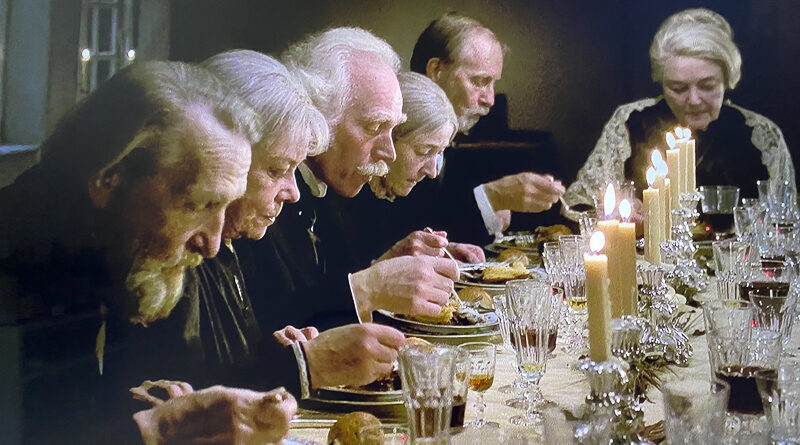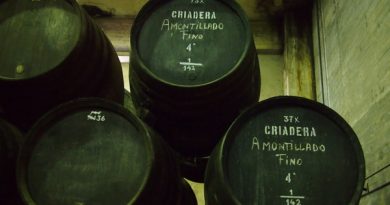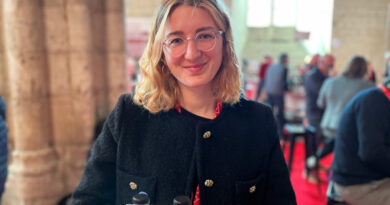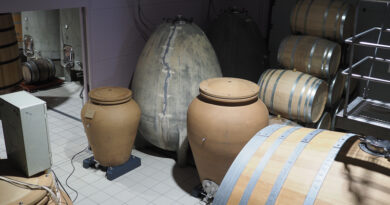Babette’s Feast: the best ever gastronomy film?
Babette’s Feast: this 1987 Danish-language film adapted from Karen Blixen’s novel is a love story about food and drink. It shows the transforming power of gastronomy in the most beautiful way, and with a nice dry sense of humour, too. [Spoiler alert. I’d actually avoid reading the rest of this article if there’s any chance you can watch the film. I found it on Amazon Prime, but it’s widely available on DVD if you still have that technology. So watch the film then come back here.]

We are in a rather bleak-looking part of coastal Denmark in the late 19th century. Two sisters, Martine and Filippa, live in a small village. The narrator says that they are past their prime: they never married. Their father had been a ‘priest and prophet’, the founder of a religious Lutheran sect. He has died, but the community have carried on his work, in a sort of religious personality cult with his picture on the wall at the centre of their meetings.
Living with the two sisters is a French servant called Babette. She was clearly very glamorous in her youth, and seems rather out of place in this community. So why is she living with these two puritan sisters? ‘Babette’s presence in the house of the two sisters can be explained only through the hidden regions of the heart.’
We track back to earlier times. ‘As young girls the beauty of Martine and Filippa had been extraordinary, akin to flowering fruit trees,’ says the narrator. Young men went to church just in the hope of meeting them. But they remained unmarried, and drifted into middle age as pivots of this dour, rather joyless community. Opportunities came for them to escape in the way of suitors, but they stayed put – and now the austere religious community was beginning to fall apart.
By this stage Babette has been living with the sisters for 14 years. We see her going round the village, collecting food, then cooking. Don’t you miss France? One man asks. ‘My only link is a lottery ticket, which a friend renews every year.’ We can see what is coming next.
But what we can’t anticipate is what Babette does with her lottery ticket winnings.
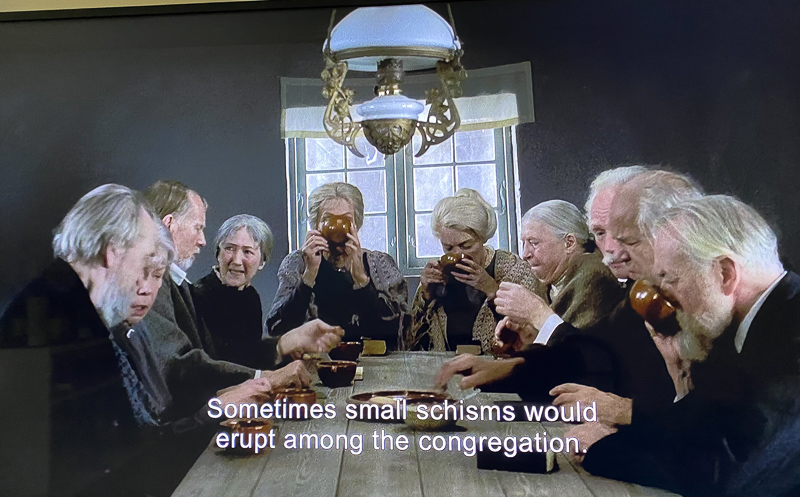
‘Sometimes small schisms would erupt among the congregation, we are told. Old resentments resurface. They approach the 100th anniversary of the birth of their founder, but the impending celebrations have a cloud cast over them by the schisms.
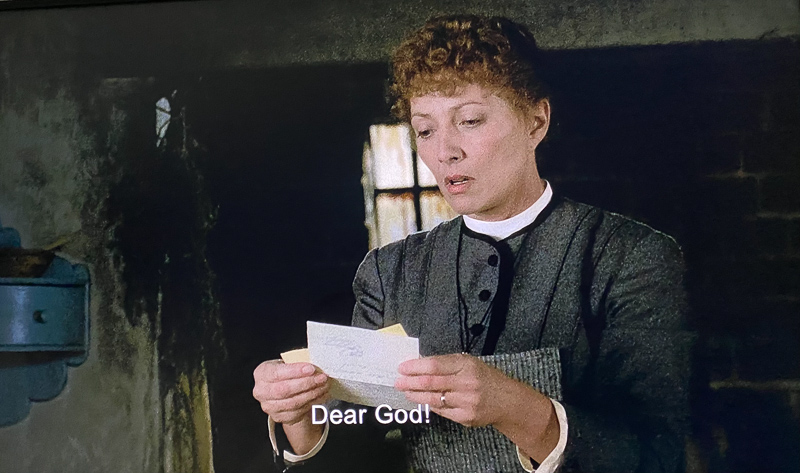
Then Babette gets her letter from France. She’s won 10 000 Francs. It’s a fortune. The sisters are convinced she will leave. But Babette sits the sisters down and asks them whether they will let her prepare the feast to celebrate the pastor’s centenary. In the end, they agree, but they have no idea of the scope of her plans. Babette leaves for a week, supposedly on holiday, but she’s actually off to source ingredients from France.
They arrive! And what ingredients. Live quail, even a large turtle, and wine! Clos du Vougeot 1845 is mentioned.

The arrival of these exotic ingredients, and particularly the wine, throws the sisters into turmoil. They are terrified of what they have permitted. Food and wine. Pleasure. They are horrified by what their father would think, looking down on them. The community gathers and resolves the moral dilemma by promising not to say a word about the food or drink: not even one comment. ‘It will be as if we never had the sense of taste,’ one man comments. They refer to the wedding at Cana, and Jesus’ first miracle. He turned water into wine when the wedding he’d attended ran out, a miracle that has perpetually troubled the religious communities who disapprove of drinking.
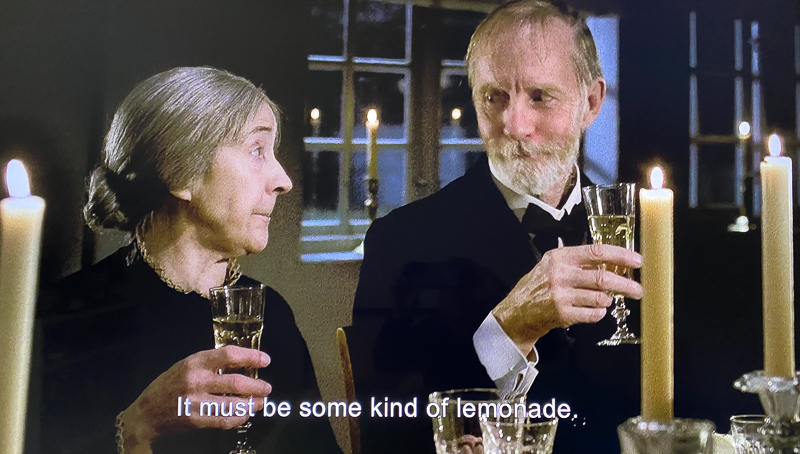
Among the guests is an outsider – a general who in the past had suited one of the daughters, and he is not shy in commenting on the food. Amontillado with turtle soup starts things off (the best he’s tasted). Then Champagne (‘it must be some kind of lemonade,’ says one of the congregation). Blinis and caviar with that. Blinis Demidoff, notes the general. ‘And this is most certainly Veuve Clicquot 1861,’ he notes.
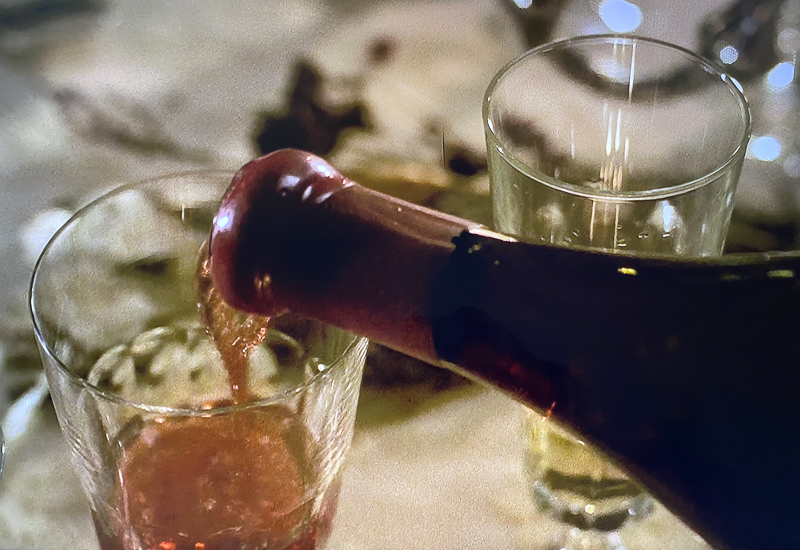
The atmosphere changes. They all open up to each other, with tenderness and happiness.
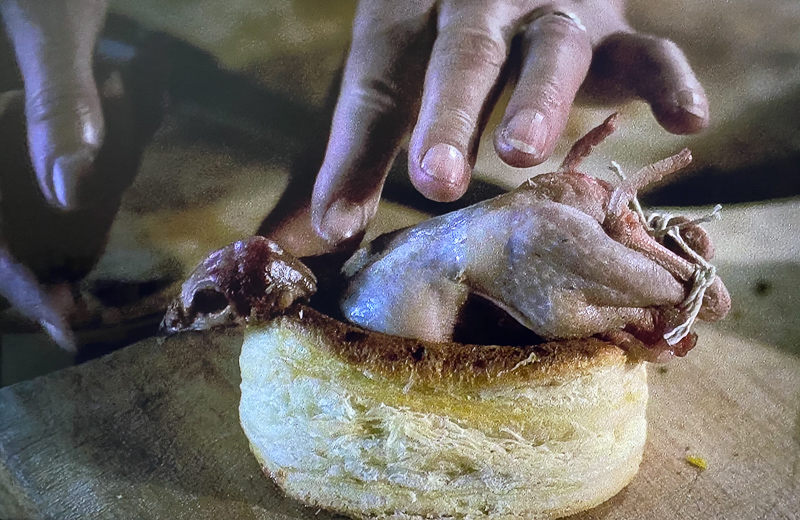
The next dish blows Babette’s cover. The general recalls how one day he dined at the Café Anglais in Paris, and they were served a dish, cailles en sarcophage, a creation of the chef, who was female. This chef, he said, had the ability to transform a dinner into a love affair – one that made no distinction between bodily appetite and spiritual appetite. Quails in a coffin is a remarkable dish, with the quail part de-boned and then stuffed with foie gras and sliced truffle, then put in a pastry case. The head is placed in, too, and this is to be crunched and the tiny brain sucked out.
Who is truly closer to God? The puritans, living joyless, repressed lives? Or Babette, with her love of people and life, and people brought close together through food and drink.
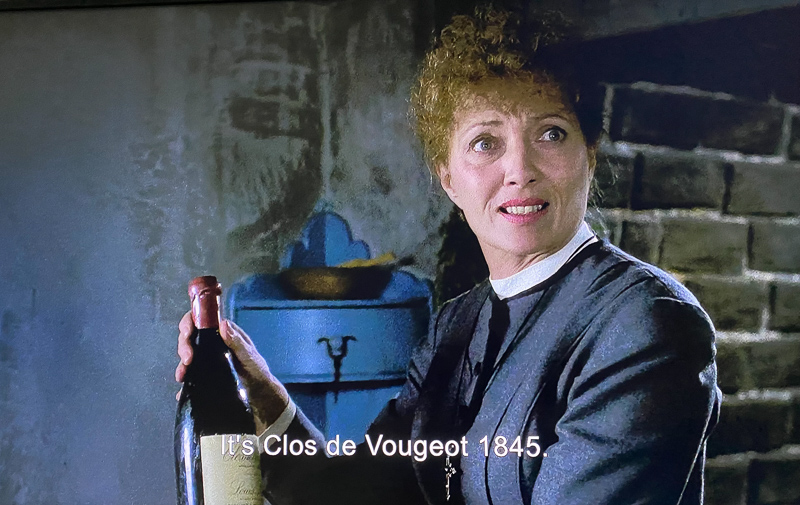
The next day, she reveals to the sisters how much the meal cost. She spent her entire winnings on the food and drink. They are stunned. She says she has no plans to go back to Paris. ‘My dear Babette, you should not have given all you owned for us.’ She replies: ‘It was not just for you.’
The menu
- “Potage à la Tortue” (turtle soup) served with Amontillado sherry
- “Blinis Demidoff” (buckwheat pancakes with caviar and sour cream) served with Veuve Cliquot Champagne
- “Cailles en Sarcophage” (quail in puff pastry shell with foie gras and truffle sauce) served with Clos de Vougeot Pinot Noir
- an endive salad
- “Savarin au Rhum avec des Figues et Fruit Glacée” (rum sponge cake with figs and candied cherries) served with Champagne
- assorted cheeses and fruits served with Sauternes
- coffee with vieux marc Grande Champagne cognac.
Watch the film on Amazon Prime

